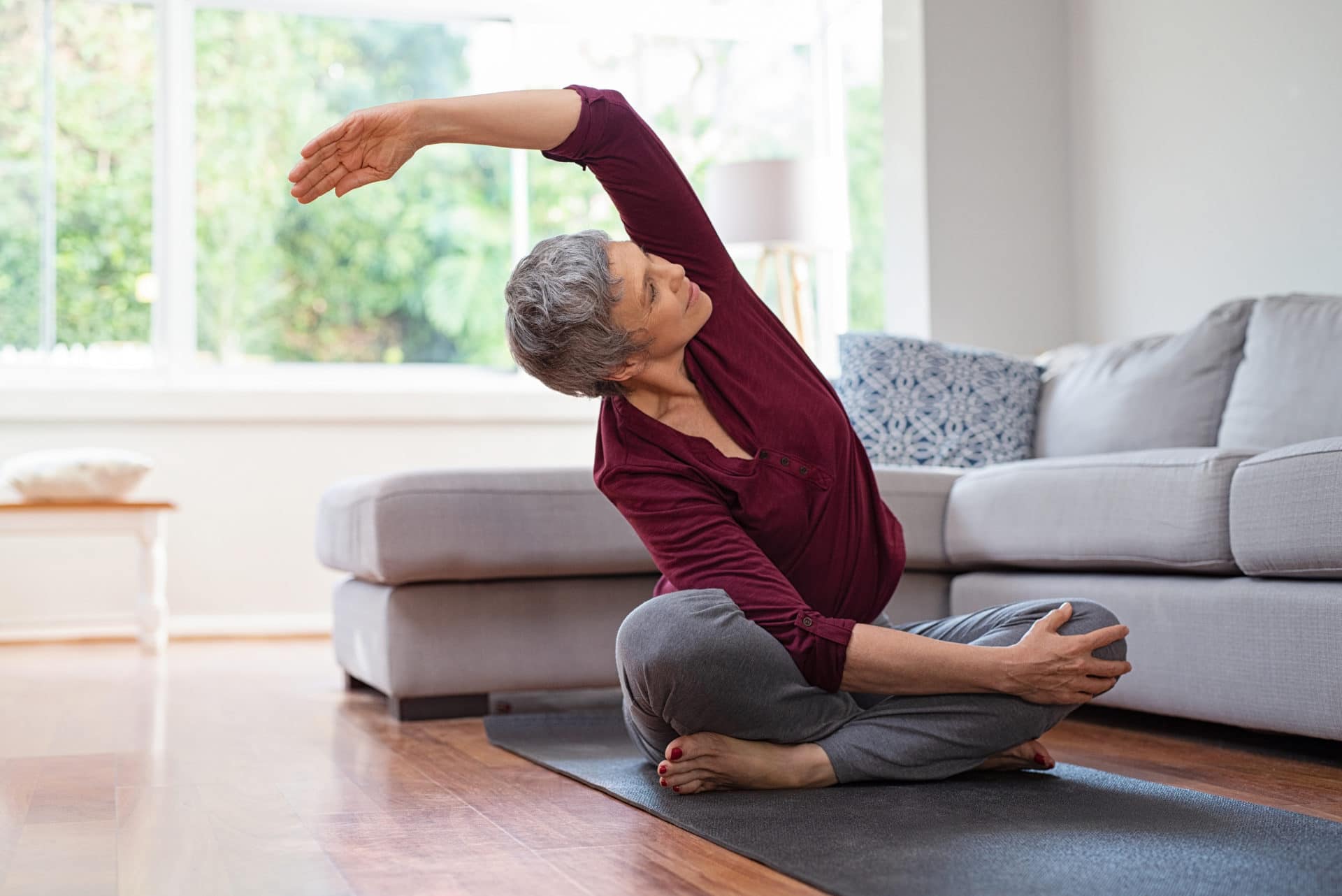One of the key components to alleviate back pain is exercise. Getting enough physical exercise can lessen strain on your muscles and joints as well as strengthen your muscles to help you maintain proper posture. However, not every exercise is going to be helpful when you are trying to target a specific area. It is important to choose exercises for lower back pain that strengthen and protect your spine from any further discomfort.
One of the primary areas you should target if you suffer from back pain is your core. Strong core muscles help prevent spinal injuries and help maintain proper spinal alignment throughout the day. You should also focus on stretching and improving your flexibility.
Here are several low impact exercises that can greatly improve lower back pain. It is important to remember that you should consult a doctor before starting any new exercises and stop immediately if you feel pain.
- Leg and arm extension: Kneel on all fours and tighten your abdominal muscles. Slowly lift your right arm and point it in front of you. Simultaneously, lift your left leg and extend it behind you. Hold this position for several seconds and then gently release. Do the same thing on the opposite side. If this is too advanced for you
to begin with, try lifting just your arm and then your leg. It is important to go at your own pace. - Hamstring Stretches: Exertion does not measure the benefit of an exercise. Many people suffer from back pain because their muscles or ligaments are too tight and the hamstrings are a common trouble area. You will need a towel or exercise band to benefit from this exercise. Gently lie on your back and bend one knee with your foot flat on the floor. Then, lift the other leg and with the towel wrapped behind it, gently pull the leg towards you. You should feel a gentle stretch in your leg. Hold for 15 – 30 seconds and complete two to four repetitions on each side.
- Cobra Pose: A modified version of a yoga pose called cobra can help improve flexibility in your spine. Lie on your stomach and place your hands just under your shoulders. Gently push up to lift your shoulders off the floor. If you are able, you can place your elbows directly under the shoulders and push up for a bigger extension. Hold for several seconds and then gently release, lowering your shoulders back down to the ground.
- Hip Lifts: Lie on your back with your knees bent and feet flat on the floor. Gently and slowly engage your core and buttocks and lift your hips up so that your hips, shoulders
and knees create a line. Hold that position for 10 seconds, then return to the starting position. Perform 8 to 10 repetitions. - Plank and Side Plank: The plank is a common exercise used to strengthen your core including your transverse
abdominis , diaphragmand pelvic floor. Once you become proficient with the basic plank you can use slight modifications to make it more challenging. To perform a basic plank, you start on the floor on your hands and knees. Carefully lower your arms with your elbows under your shoulders and yourhands shoulder width apart. Your arms, from your elbow to your fingertips should be supporting your upper body. Then, you need to extend your legs behind you, creating a straight line with your body. Once you are in the correct position, tighten your core muscles and hold. Make sure that you are not arching your back and that your body forms a straight line. Once you have mastered the plank you can try different variations. A side plank consists of the same basic principle of the standard plank but performed on each side. You start on your side with your feet together and arm under your body with your forearm directly under your shoulder. Then, engage your core to lift your body up, creating a line from head to toe. - Cat stretches: This stretch can help provide relief and flexibility for your spine. Start on your hands and knees,
hip width apart, and slowly arch your spine up towards the ceiling pulling in your stomach muscles so that you vaguely resemble an angry cat. Then slowly, onevertebrae at a time, release your position back to the start. Perform 3 to 5 repetitions.
Lower back pain can be excruciating, but it is important to design a treatment plan with the help of a skilled medical professional. If you are experiencing this type of pain, contact our office. We pride ourselves on providing our patients with caring, thorough, and effective treatment.
Get Back Your Normal Life Again
As pain specialists, we can guarantee that we are more than qualified in alleviating your pain and treating your condition.

